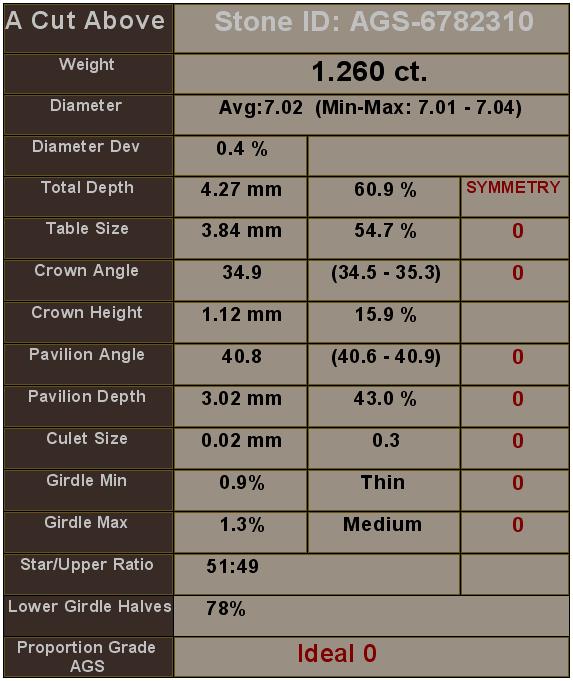I am curious to know what the HCA scores really mean?
Does a smaller score always imply better performance? If so...how much, and what really defines this scale or are these simply magic numbers? What I am getting at is how much better would a 1.0 score be then a 1.4? Is this even noticable?
Here is the Sarin report of a stone I am interested in. HCA ranks it at a 1.4 assuming I am using it properly.
Thanks.

Does a smaller score always imply better performance? If so...how much, and what really defines this scale or are these simply magic numbers? What I am getting at is how much better would a 1.0 score be then a 1.4? Is this even noticable?
Here is the Sarin report of a stone I am interested in. HCA ranks it at a 1.4 assuming I am using it properly.
Thanks.
















300x240.png)